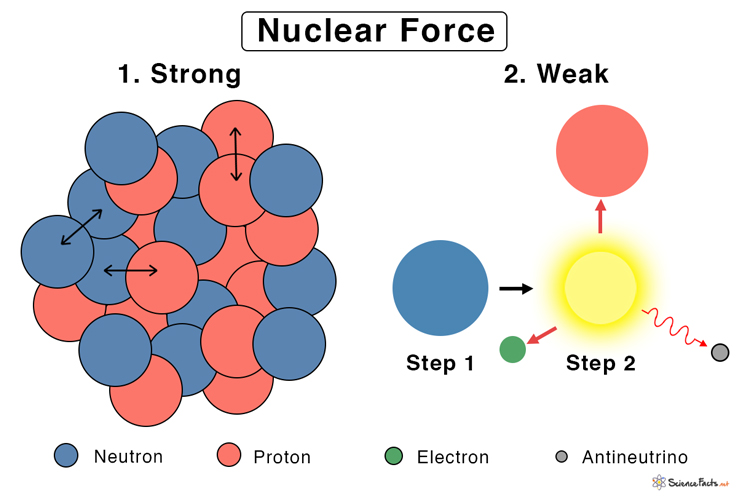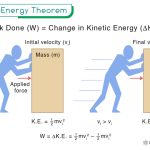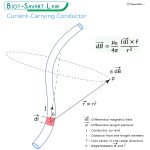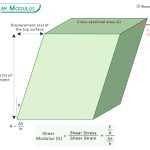Nuclear Force
What is Nuclear Force
The nuclear force is the force between the particles in the nucleus of an atom. It can be between two protons, two neutrons, or between a proton and a neutron. The nuclear force is attractive. It binds the protons and neutrons together and is responsible for the stability of the nucleus. It is a short-range force with a range of the order of the proton dimension, which falls off to zero at a specific distance.
The nuclear force is spin-dependent. However, it is charge-independent, which means that the forces between two protons, two neutrons, and a proton and a neutron are approximately the same when the electromagnetic forces are ignored.
Properties of Nuclear Force
Here are some facts and characteristics of the nuclear force.
- Classified into strong nuclear force and weak nuclear force
- Occurs between nucleons, like protons and neutrons
- Short-range and finite (of the order of proton dimension)
- Strong nuclear force that is powerful than the electric force by 137 times
- It does not affect the physical and chemical properties of a substance
- Detected through nuclear reactions and radioactivity
- Dependent on the spin of the particles
Types: Strong and Weak Nuclear Forces
The nuclear force can be classified into two types.
1. Strong Nuclear Force: The attractive force ensures the nucleus’s unity by holding all fundamental particles like protons, neutrons, and quarks together. The force is responsible for alpha radiation.
2. Weak Nuclear Force: The force that acts inside the individual nucleons and occasionally leads to a neutron transforming into a proton and vice versa. This force is commonly observed during beta decay.
How are the strong and weak nuclear forces alike?
Both the strong and the weak nuclear forces are present inside the nucleus of an atom. Both of them act on the quarks that make up the protons and neutrons. They have a short, finite range and are more powerful than gravity.
Strong vs. Weak Nuclear Force
The following table lists the differences between the strong and weak forces.
| Strong Nuclear Force | Weak Nuclear Force | |
|---|---|---|
| Definition | The attractive force between fundamental particles that make up a nucleus | The force that changes a neutron into a proton during radioactive decay of specific nuclei |
| Responsible for | Holding the quarks together in the baryons; and protons and neutrons in a nucleus | Radioactive decay and nucleosynthesis |
| Relative Strength | 1 | 10-6 |
| Range | 10-15 m | 10-18 m |
| Force carriers | Gluons | W and Z bosons |
| Described by | Quantum chromodynamics | Quantum flavordynamics |
| Examples | The force between a neutron and a proton | Beta-decay of uranium-235 |
Applications of Nuclear Force
Here are some of the applications of the nuclear force.
- Nuclear power plant
- Nuclear weapons
- Advanced medical diagnosis and treatment
- Radiocarbon dating (determines the age of the organic materials from carbon isotope abundances)
- Determine the age of the Earth
- Responsible for the existence of the Sun
Difference between Gravitational Force and Nuclear Force
| Gravitational Force | Nuclear Force | |
|---|---|---|
| Occurs between | Astronomical objects | Fundamental particles |
| Takes place in | Space | Nucleus of an atom |
| Range | Infinite | Short-range |
| Strength | Weaker than the nuclear force | Stronger than the gravitational force |
-
References
Article was last reviewed on Thursday, February 2, 2023








